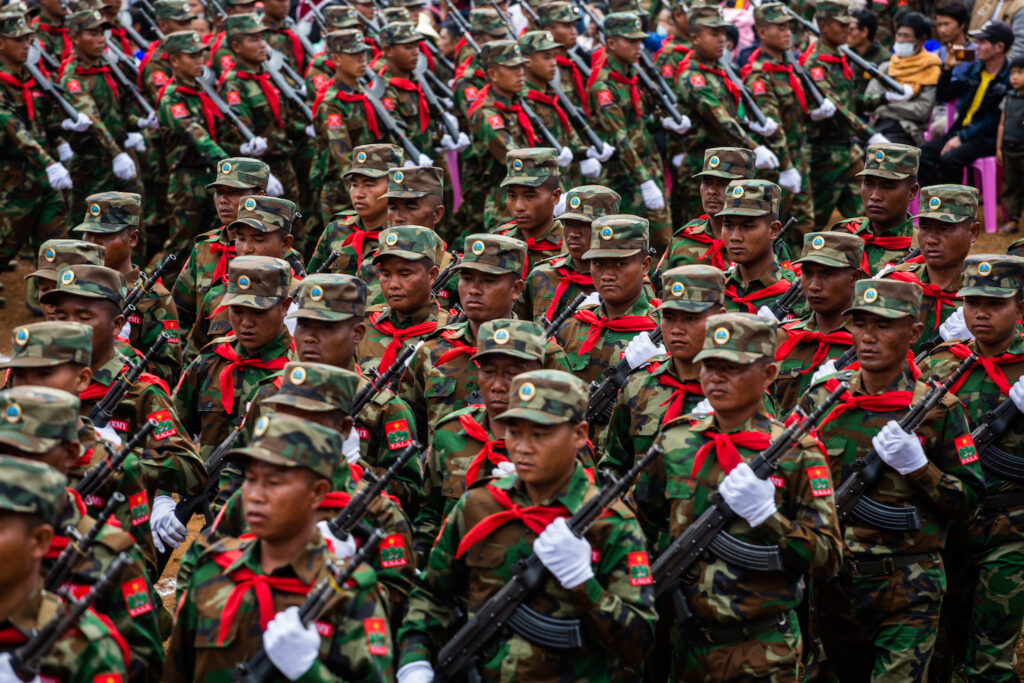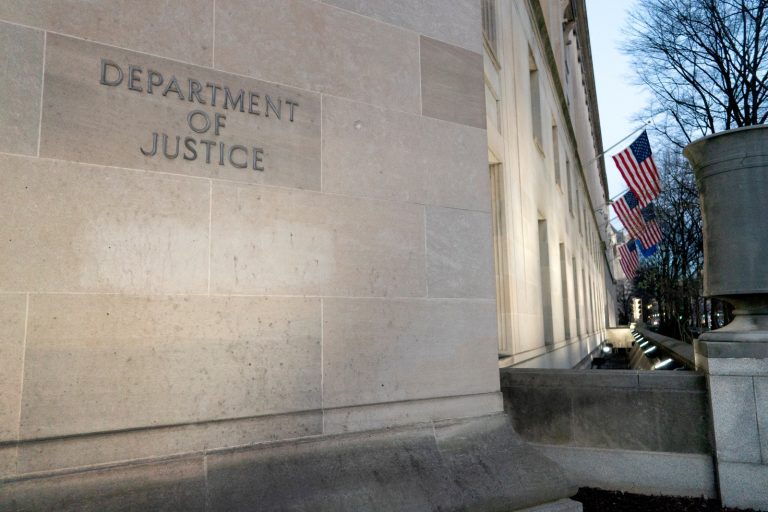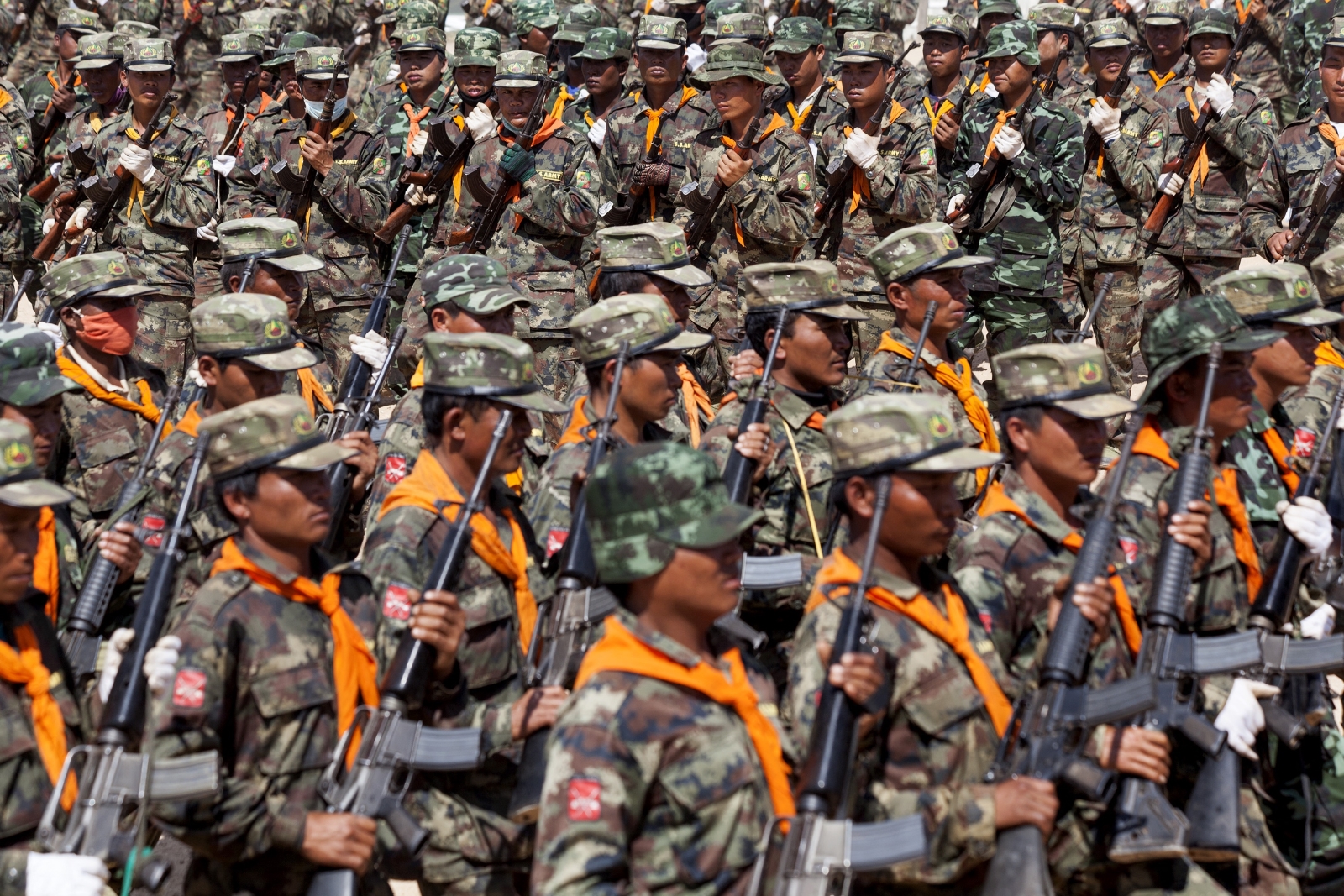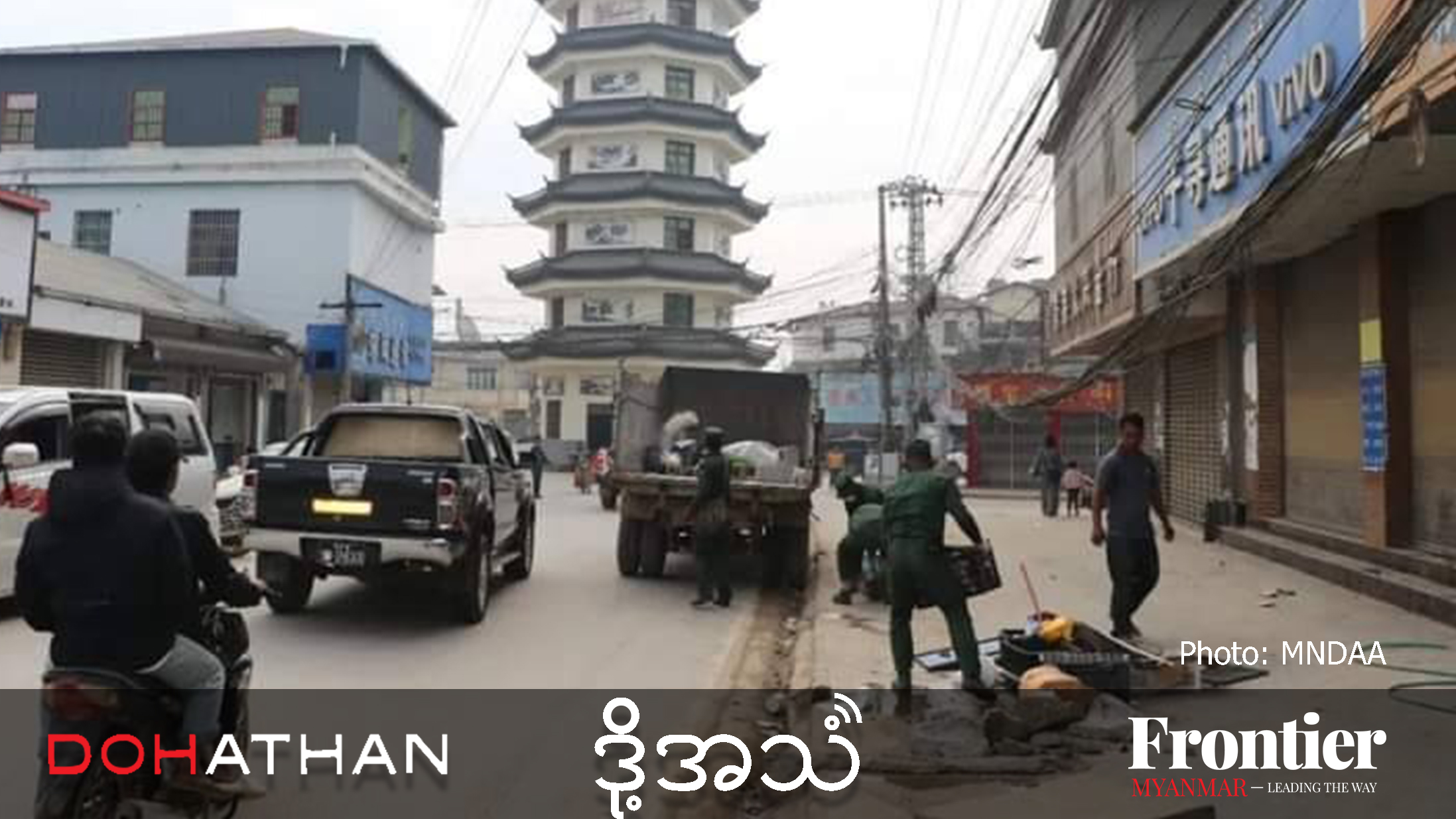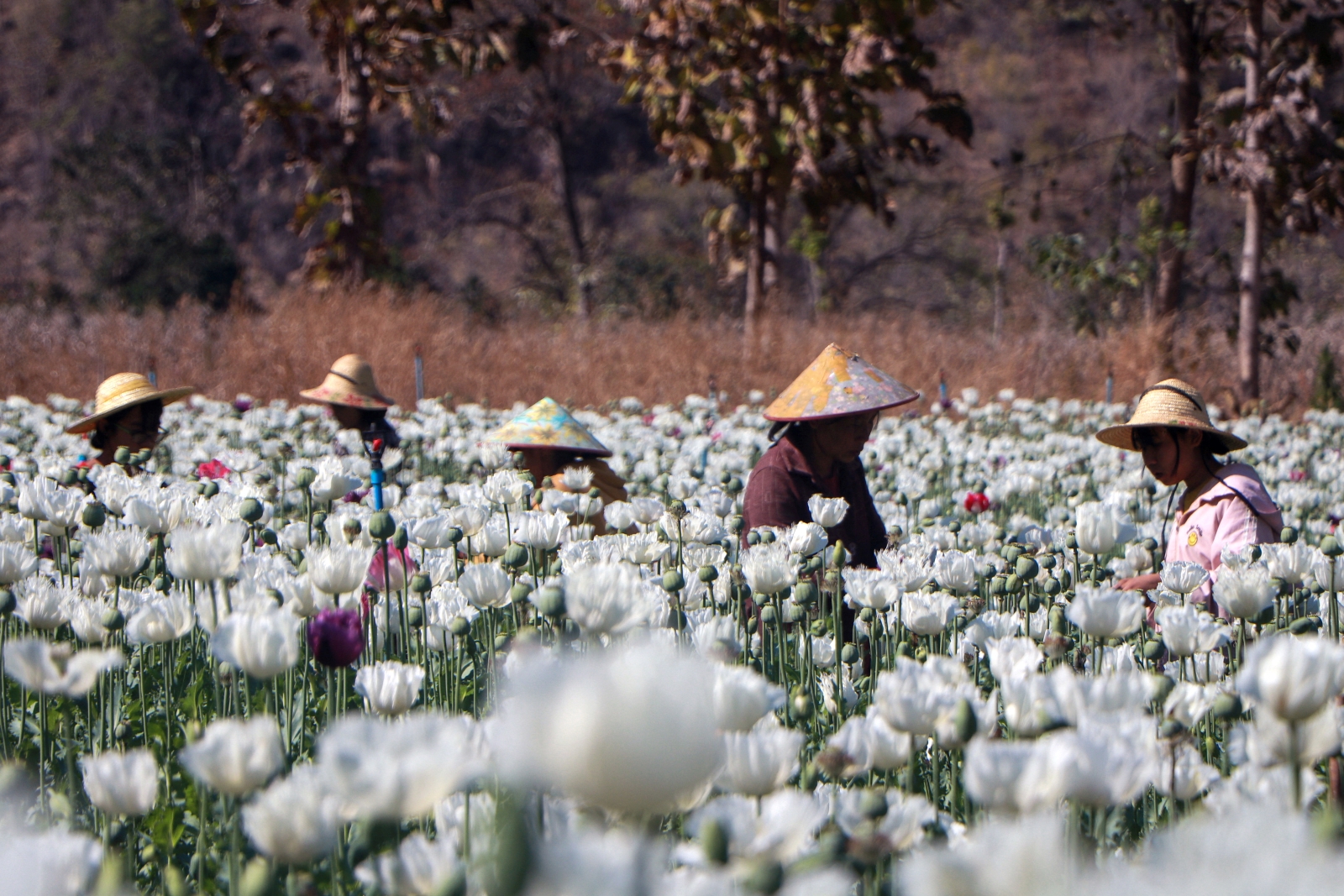As fighting flares in Myanmar’s ruby capital, the Ta’ang National Liberation Army is more openly cooperating with post-coup resistance groups, but its main objective may lie farther north, on the border with China.
By FRONTIER
Across Mogok Township, it wasn’t unusual to see the military and its armed opponents on the march at different times, but for two years that didn’t boil over into open warfare.
“Sometimes the military passed through our village, sometimes the People’s Defence Forces passed through too,” said Htoo Htoo*, a resident of Kone San village, about 16 kilometres from Mogok town. “But there weren’t any clashes.”
The wealth of the Mandalay Region township, famous for its ruby mines, has helped various armed factions fund their military operations – including the Ta’ang National Liberation Army in recent years. The TNLA, which fights for autonomy for the Ta’ang ethnic group, also known as the Palaung, is one of the strongest non-state armed groups in Myanmar, fielding 10,000-15,000 troops according to a recent estimate by the International Crisis Group.
“Before the coup, there were battles between the TNLA and military in Mogok, but there was nothing after the coup until last month,” said Ko Thet Oo*, a shop owner in Mogok town, speaking to Frontier in October. “Before that, the PDFs only carried out some small guerrilla attacks in the town.”
After the military overthrew the elected National League for Democracy government in 2021 and killed hundreds of protesters, new armed resistance groups formed, broadly known as People’s Defence Forces. The PDFs have allied with some more established ethnic armed groups, like the TNLA, receiving military training and in some cases fighting side by side against the military.
The TNLA has occasionally fought with the military in northern Shan State since the coup, but it has downplayed its relationship with PDFs. In recent months, though, it has been fighting more openly alongside them as it tries to carve out a territory on the Chinese border in northern Shan, while seemingly attempting to overstretch the military by opening a new front over 330 kilometres to the south in Mogok.
On September 10, troops from the Mogok PDF Battalion 1223 seized control of a small military outpost on a hill near Kone San village, sparking a series of fierce clashes.
The Mogok PDF has followed the trajectory of most PDFs. These started out as grassroots, decentralised local militias, often armed with homemade hunting rifles, but have become increasingly well-organised and well-armed.
The Mogok PDF was created by the merging of three PDFs that formed organically after the coup. The Red Wolves of Mogok became battalion 1221, while the Thabeikkyin and Nawnghkio PDFs converted into battalions 1222 and 1223 respectively. This consolidation was overseen by the National Unity Government, a parallel administration appointed by lawmakers deposed in the coup, with the TNLA providing military training.
“The military often camped out there,” said Ko Kyaw Thu*, an officer from battalion 1223 who participated in the fight to seize the Kone San hill outpost. “We went in and took it.”
But the military didn’t take the defeat lying down, quickly sending reinforcements.
“In the afternoon, news spread around the village that many soldiers were gathering near the hill,” said Htoo Htoo. “Later, I started hearing gunshots.”
Kyaw Thu said that same evening, more than 50 soldiers attempted to retake the hilltop amid a 45-minute firefight.
“But we were able to defend effectively. The military lost six troops and then they retreated. This was the beginning of the operation we call Moe Lone Mhaing,” Kyaw Thu said. “This is the first step to reclaiming our land.”
Moe Lone Mhaing is a revolutionary anthem by a singer who joined the All Burma Students’ Democratic Front armed group during the 1988 uprising against military rule. Kyaw Thu said another reason for the name was the operation’s origins in Mogok, whose name starts with the same syllable.
Building Ta’ang State
The PDF was joined in its Mogok offensive by the TNLA’s Brigade 2, while other TNLA brigades had been clashing with the military near the Chinese border, in northern Shan’s Muse and Kutkai townships, since July.
However, in the immediate aftermath of the coup, as fighting against the junta began to rage across the country, the TNLA was more focused on a local rival – the Restoration Council of Shan State – which since 2015 had expanded from southern Shan northwards.
Cooperating with a different Shan armed group, the Shan State Progress Party, the TNLA seized much of the RCSS’s territory, announcing early last year that it had expelled the group to the southern side of the Mandalay-Muse highway.
After that, the TNLA clashed sporadically with the military, with previous fighting peaking in December last year, when the military launched an assault on the TNLA’s headquarters in Namhsan Township in northern Shan’s Palaung Self-Administered Zone. But for the most part, the TNLA has largely kept its head down and focused on developing its administrative system and public services.

The TNLA has declared a Ta’ang State with five districts in northern Shan: Namhsan, Lashio, Shweli, Man Aung and Thanlwin. The recent Crisis Group report called this “quasi-state” a “work in progress”, but said it has a rudimentary judiciary and is providing education and healthcare services, often in cooperation with the NUG and local civil society groups.
“When the military was busy fighting with the resistance forces in other parts of Myanmar, the TNLA did more to activate their governance system in their areas,” said Ko Zeya*, who researches armed groups in Shan.
The strategy is similar to the path taken by the Arakan Army, a TNLA ally, in Rakhine State. But with the recent return of fighting, the TNLA’s public services are under pressure, with the military allegedly targeting civil society organisations and social welfare groups accused of working with the TNLA.
“The situation is already a mess in some areas,” said Mai Yan Oo*, member of a village-based association in Kutkai Township that supports monastic schools and people displaced by conflict. “If the fighting gets more intense, it could destroy our schools and community services.”
Lieutenant-Colonel Tar Aik Kyaw, spokesperson for the TNLA, downplayed the relationship between the armed group and the organisations providing public services.
“They are doing education and health programmes in our communities, so sometimes they need to cooperate with us to do that in our territory. But we’re not always working together; sometimes the CSOs do their jobs by themselves,” he told Frontier.
However, any link – real or imagined – with a resistance group is enough to put these initiatives in the crosshairs of the military, which has routinely bombed schools and hospitals outside of its control.
A push for the border
In January, soon after the military attacked the TNLA’s headquarters, sources in the armed group told Frontier fighting would escalate this year, but instead the first half of 2023 saw a lull in clashes. Many attributed this to pressure from China, which has discouraged ethnic armed groups under its influence from working too closely with PDFs or the NUG and from destabilising the border region.
In June, the Brotherhood Alliance – the TNLA, AA and Myanmar National Democratic Alliance Army – even sat down with the military regime for peace talks brokered by China. But this seemed to prove fruitless; the outbreak of clashes in Mogok was preceded by fighting in Muse in late July, near the Chinese border.
Several of Myanmar’s most powerful ethnic armed groups, including the Kachin Independence Army and United Wa State Army, control enclaves on the border. This gives them better access to the international weapons market and essential imports, making a Tatmadaw blockade ineffective. It also helps to deter attacks by the military, who may fear angering Beijing through a spillover of fighting and refugees to China. And there are financial benefits, too.
“The TNLA and other ethnic armed groups get taxes and income from the Muse area, and the border is very important logistically for any ethnic armed group,” said Ko Zeya.
“I think the military wanted to cut them off from the border because they know how important it is to the TNLA. If the TNLA can’t access the border, it will be very difficult for them to stand. If they can develop a stronghold on the border, they will be stronger.”
Frontier understands the TNLA gained a foothold in the mountains outside Selan village in Muse Township near China, from where it intended to launch a foray to seize control of a section of the border, but instead came under intense attack from the military.
Ko Hlaing Taw*, a volunteer at a humanitarian rescue team based in Muse town, said the TNLA lost three camps during this assault.
“We heard the TNLA lost a camp at the base of Loi Tay Mong mountain and two other camps in Muse Township around September 20,” he said.
Ko Zeya said the TNLA may have backed the operation in Mogok in order to overstretch the military and relieve its forces in Muse.
“I think it’s a strategy to put pressure on the military in several areas,” he said.
The plan may have worked, at least in part. Hlaing Taw said the TNLA has since recovered one of the lost outposts and is “still maintaining a presence around Selan village”, although the situation remains fluid. “Now the fighting is intense in Muse Township again. Both sides have lost a lot of troops,” he said.
Another problem for the TNLA is there are no major Ta’ang populations along the border, meaning any incursion could deepen existing tensions with other ethnic groups.
“The TNLA’s expansion has created tensions with other ethnic armed groups and non-Ta’ang communities in northern Shan State,” said the Crisis Group report, adding that the uneven distribution of Ta’ang villages makes it “difficult to establish a contiguous territory”.

The big reveal
Something else has changed with the Moe Lone Mhaing operation. Soon after fighting flared in Mogok, the Mogok and Mandalay PDFs both revealed to news site Myanmar Now that they were fighting alongside the TNLA.
Previously, they had only admitted to receiving military training and support, not to launching joint operations.
The coordinated nature of the reveal, and the PDFs’ dependence on the TNLA, indicates that the Ta’ang group approved the news leak, despite continuing to deny the information.
“We’ve never announced anything like this,” said TNLA spokesperson Aik Kyaw. “The TNLA is fighting the military by itself. Other armed groups aren’t involved in our operations.”
The mixed messages appear to be an attempt at strategic ambiguity – currying favour with the Myanmar public, which wants to see ethnic armed groups get more involved in the Spring Revolution against military rule, while maintaining plausible deniability for China and the military.
“The TNLA didn’t announce officially that they are doing joint operations with the PDFs. I think this shows the TNLA is still under pressure from China,” said Ko Zeya. “They indirectly announced it because they want to show the public what they are doing for the Spring Revolution.”
While the TNLA’s claim not to be fighting alongside PDFs may seem untenable, it has given the group room to manoeuvre and deescalate in the past. After the military attacked TNLA headquarters last year, the regime released a statement calling the clash a “misunderstanding”, saying it was only targeting PDFs and the TNLA accidentally got caught up in the fighting.
Crisis Group interpreted this as the military firing a “shot across the TNLA’s bow”, warning the group not to work with PDFs. But Ko Zeya said the TNLA may have been sending a counter warning with the joint assault in Mogok, showing “the military that if it attacks the TNLA more, the TNLA will become closer with the PDFs and the NUG, which the military really doesn’t want”.
Kyaw Thu, from the Mogok PDF, said the TNLA has long promised it would eventually be more open and explicit about its support. “Ever since we started working together, they said when the time is right, they will implement a new strategy to oppose the military dictatorship,” he said.
The state of play
Fighting continues to rage in Mogok and Muse, with resistance groups claiming to have scored victories even as civilians pay a heavy toll. From July to October 14, the TNLA said there were at least 78 clashes with the military, with more than 500 civilians displaced in Mogok and 400 in Muse.
“We have achieved 60 percent of our objectives for this mission,” said Kyaw Thu, claiming the Mogok PDF has seized three military outposts including an artillery base in the township. “We can release more details after the operation. Now we’re still fighting, but we can say we’re closer to the town.”
From October 12-16, fighting intensified, with the regime sending 200 troops to try to retake the camps it lost in Mogok.
But it was the fighting that kicked off on September 15 near Nyaung Kone village, just 12km from Mogok town, that Kyaw Thu says was the most intense so far. He claimed the military responded by sending three infantry battalions to the area while bombarding it with artillery shells and air strikes.
“The military shot artillery from its command centre in Mogok town. We heard it about five times a day at least,” said Thet Oo, the shop owner in Mogok. “During that time, most of the streets of Mogok were empty.”
Some of the shells landed in Nyaung Kone village, killing and wounding civilians, including a child.
On September 20, shrapnel from a shell injured a man and his five-year-old son at their home. “When they got hit, we tried to take the kid and the father to the Mogok hospital, but the military blocked the road to the town,” said fellow villager Ko Wai Phyo*. “They wouldn’t let us pass.”
They were forced to take another, roundabout route via Kyaukme Township, adding four hours to the journey.
“We had to drive for five hours. On the way, the child died because of excessive bleeding,” Wai Phyo said. “If the military had let us go straight to Mogok town, it would’ve taken an hour to reach the hospital and that child wouldn’t have died.”
*indicates the use of a pseudonym for security reasons


